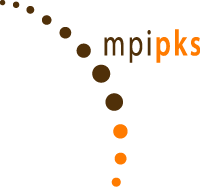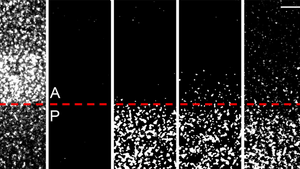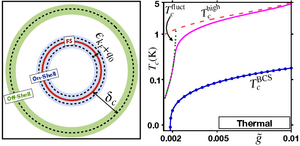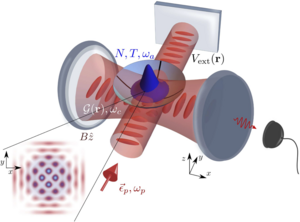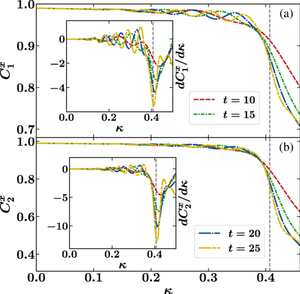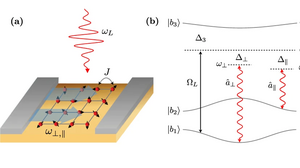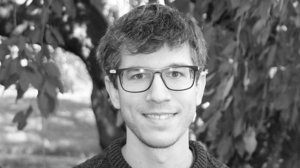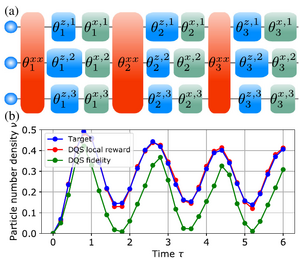
Highlights
Institute's News
Call for ELBE postdoctoral Fellowships now open!
Application deadline: 13 March 2022. The ELBE postdoctoral fellows program addresses independent researchers on the postdoctoral level, who come with their own research proposal and freely choose which groups to affiliate with. The program provides an ideal springboard to an independent research career in systems biology, theoretical biophysics, computational biology, and related areas. Please click on the link- button to see the full advertisement!
Read morePublication Highlights
How do our organs know when to stop growing?
The smallest fish in the world, the Paedocypris, measures only 7 millimeters. This is nothing compared to the 9 meters of the whale shark. The small fish shares many of the same genes and the same anatomy with the shark, but the dorsal and caudal fins, gills, stomach and heart, are thousands of times smaller! How do organs and tissues of this miniature fish stop growing very quickly, unlike those of their giant cousin? A multidisciplinary team led by scientists from the University of Geneva (UNIGE), Switzerland, and the Max Planck Institute for the Physics of Complex Systems (MPIPKS) was able to answer this fundamental question by studying its physics and using mathematical equations, as revealed by their work published in the journal Nature.
M. R. Michaelidi et al., Nature (2021)
Read moreM. R. Michaelidi et al., Nature (2021)
Publication Highlights
Long-Range Photon Fluctuations Enhance Photon-Mediated Electron Pairing and Superconductivity
Recently, the possibility of inducing superconductivity for electrons in two-dimensional materials has been proposed via cavity-mediated pairing. The cavity-mediated electron-electron interactions are long range, which has two main effects: firstly, within the standard BCS-type pairing mediated by adiabatic photons, the superconducting critical temperature depends polynomially on the coupling strength, instead of the exponential dependence characterizing the phonon-mediated pairing; secondly, as we show here, the effect of photon fluctuations is significantly enhanced. These mediate novel non-BCS-type pairing processes, via nonadiabatic photons, which are not sensitive to the electron occupation but rather to the electron dispersion and lifetime at the Fermi surface. Therefore, while the leading temperature dependence of BCS pairing comes from the smoothening of the Fermi-Dirac distribution, the temperature dependence of the fluctuation-induced pairing comes from the electron lifetime. For realistic parameters, also including cavity loss, this results in a critical temperature which can be more than 1 order of magnitude larger than the BCS prediction. Moreover, a finite average number of photons (as can be achieved by incoherently pumping the cavity) adds to the fluctuations and leads to a further enhancement of the critical temperature.
A. Chakraborty and F. Piazza, Phys. Rev. Lett. 127, 177002 (2021)
Read moreA. Chakraborty and F. Piazza, Phys. Rev. Lett. 127, 177002 (2021)
Publication Highlights
Cavity QED with quantum gases: new paradigms in many-body physics
We review the recent developments and the current status in the field of quantum-gas cavity QED. Since the first experimental demonstration of atomic self-ordering in a system composed of a Bose–Einstein condensate coupled to a quantized electromagnetic mode of a high-Q optical cavity, the field has rapidly evolved over the past decade. The composite quantum-gas-cavity systems offer the opportunity to implement, simulate, and experimentally test fundamental solid-state Hamiltonians, as well as to realize non-equilibrium many-body phenomena beyond conventional condensed-matter scenarios. This hinges on the unique possibility to design and control in open quantum environments photon-induced tunable-range interaction potentials for the atoms using tailored pump lasers and dynamic cavity fields. Notable examples range from Hubbard-like models with long-range interactions exhibiting a lattice-supersolid phase, over emergent magnetic orderings and quasicrystalline symmetries, to the appearance of dynamic gauge potentials and non-equilibrium topological phases. Experiments have managed to load spin-polarized as well as spinful quantum gases into various cavity geometries and engineer versatile tunable-range atomic interactions. This led to the experimental observation of spontaneous discrete and continuous symmetry breaking with the appearance of soft-modes as well as supersolidity, density and spin self-ordering, dynamic spin-orbit coupling, and non-equilibrium dynamical self-ordered phases among others. In addition, quantum-gas-cavity setups offer new platforms for quantum-enhanced measurements. In this review, starting from an introduction to basic models, we pedagogically summarize a broad range of theoretical developments and put them in perspective with the current and near future state-of-art experiments.
F. Mivehvar et al. Adv. Phys. 70, 1 (2021)
Read moreF. Mivehvar et al. Adv. Phys. 70, 1 (2021)
Publication Highlights
Signatures of Quantum Phase Transitions after Quenches in Quantum Chaotic One-Dimensional Systems
Quantum phase transitions are central to our understanding of why matter at very low temperatures can exhibit starkly different properties upon small changes of microscopic parameters. Accurately locating those transitions is challenging experimentally and theoretically. Here, we show that the antithetic strategy of forcing systems out of equilibrium via sudden quenches provides a route to locate quantum phase transitions. Specifically, we show that such transitions imprint distinctive features in the intermediate-time dynamics, and results after equilibration, of local observables in quantum chaotic spin chains. Furthermore, we show that the effective temperature in the expected thermal-like states after equilibration can exhibit minima in the vicinity of the quantum critical points. We discuss how to test our results in experiments with Rydberg atoms and explore nonequilibrium signatures of quantum critical points in models with topological transitions.
A. Haldar et al. Phys. Rev. X 11, 031062 (2021)
Read moreA. Haldar et al. Phys. Rev. X 11, 031062 (2021)
Publication Highlights
Cavity-induced quantum spin liquids
Quantum spin liquids provide paradigmatic examples of highly entangled quantum states of matter. Frustration is the key mechanism to favor spin liquids over more conventional magnetically ordered states. Here we propose to engineer frustration by exploiting the coupling of quantum magnets to the quantized light of an optical cavity. The interplay between the quantum fluctuations of the electro-magnetic field and the strongly correlated electrons results in a tunable long-range interaction between localized spins. This cavity-induced frustration robustly stabilizes spin liquid states, which occupy an extensive region in the phase diagram spanned by the range and strength of the tailored interaction. This occurs even in originally unfrustrated systems, as we showcase for the Heisenberg model on the square lattice.
A. Chiocchetta et al. Nat. Commun. 12, 5901 (2021)
Read moreA. Chiocchetta et al. Nat. Commun. 12, 5901 (2021)
Publication Highlights
Carrier transport theory for twisted bilayer graphene in the metallic regime
Understanding the normal-metal state transport in twisted bilayer graphene near magic angle is of fundamental importance as it provides insights into the mechanisms responsible for the observed strongly correlated insulating and superconducting phases. Here we provide a rigorous theory for phonon-dominated transport in twisted bilayer graphene describing its unusual signatures in the resistivity (including the variation with electron density, temperature, and twist angle) showing good quantitative agreement with recent experiments. We contrast this with the alternative Planckian dissipation mechanism that we show is incompatible with available experimental data. An accurate treatment of the electron-phonon scattering requires us to go well beyond the usual treatment, including both intraband and interband processes, considering the finite-temperature dynamical screening of the electron-phonon matrix element, and going beyond the linear Dirac dispersion. In addition to explaining the observations in currently available experimental data, we make concrete predictions that can be tested in ongoing experiments.
G. Sharma et al. Nature Commun. 12, 5737 (2021)
Read moreG. Sharma et al. Nature Commun. 12, 5737 (2021)
Institute's News
Call for Distinguished PKS Postdoctoral Fellowship 2022 now open!
Application deadline: 24 November 2021. Distinguished PKS postdoctoral fellows appear personally along with the departments and groups on the main research page of the institute and are expected to have at least one year of postdoctoral experience at an institution other than the one at which their PhD was awarded. Applications for this fellowship directly after completion of the PhD might be considered in exceptional cases.
Please click on the link- button to see the full advertisement!
Read moreInstitute's News
New Research Group - The Physics of Living Matter
We cordially welcome Ricard Alert at the institute! Ricard joins MPI-PKS from Princeton University and establishes the research group "The Physics of Living Matter". The group aims at uncovering physical principles of living matter. In particular, it will develop the physics of active matter to understand collective behaviors in cells and tissues. The group's research topics include collective cell migration, self-organization in bacterial colonies, active turbulence, mechanochemical patterns in tissues, mechanically-regulated tissue growth, and active fluctuations in cells. Ricard is also a member of the Center for Systems Biology Dresden and strengthens the collaboration of MPI-PKS with experimental groups at MPI-CBG.
Read morePublication Highlights
Reinforcement Learning for Digital Quantum Simulation
Digital quantum simulation on quantum computers provides the potential to simulate the unitary evolution of any many-body Hamiltonian with bounded spectrum by discretizing the time evolution operator through a sequence of elementary quantum gates. A fundamental challenge in this context originates from experimental imperfections, which critically limits the number of attainable gates within a reasonable accuracy and therefore the achievable system sizes and simulation times. In this work, we introduce a reinforcement learning algorithm to systematically build optimized quantum circuits for digital quantum simulation upon imposing a strong constraint on the number of quantum gates. With this we consistently obtain quantum circuits that reproduce physical observables with as little as three entangling gates for long times and large system sizes up to 16 qubits. As concrete examples we apply our formalism to a long-range Ising chain and the lattice Schwinger model. Our method demonstrates that digital quantum simulation on noisy intermediate scale quantum devices can be pushed to much larger scale within the current experimental technology by a suitable engineering of quantum circuits using reinforcement learning.
A. Bolens et al., Phys. Rev. Lett. 127, 110502 (2021).
Read moreA. Bolens et al., Phys. Rev. Lett. 127, 110502 (2021).
